Stuffed with sweet kabocha squash and miso-glazed eggplant, these Oyaki Japanese dumplings are a popular snack in Nagano Prefecture in central Japan.
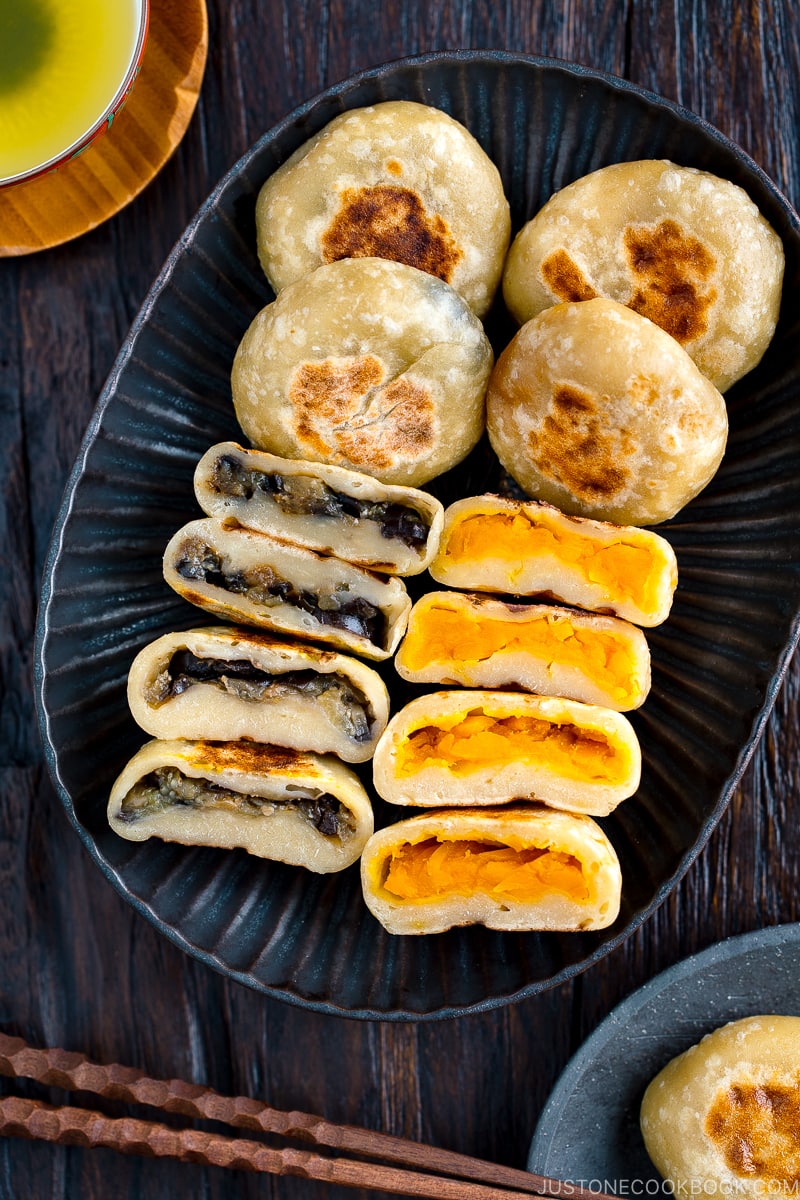
As the weather chills and you spend more time in the comfort of your home, I thought it would be nice to share a fun Japanese dumpling recipe that will keep you busy in the kitchen. You – and maybe your kids too – get to play with flour, making the dough from scratch, and stuffing the dumplings with your favorite fillings!
I love making Oyaki (Oyaki) – Japanese Stuffed Dumplings – this time of year. They are such delicious comfort food on cold days, so I just had to introduce them to you today.
What is Oyaki?
Oyaki (Oyaki) are stuffed dumplings that originated in Nagano Prefecture. The chewy oyaki dough is made from wheat flour or a mixture of wheat flour and buckwheat flour and stuffed with a variety of yummy fillings. The fillings are generally made from vegetarian ingredients such as fresh seasonal vegetables, mushrooms, beans, or pickles.
These rustic, homemade oyaki dumplings have played an important role in Nagano’s regional cuisine for generations. Located in central Japan, Nagano has steep mountains and a cold climate, so rice cultivation was very difficult. Instead, soba (buckwheat) became the main crop, with Nagano yielding the 2nd highest production by volume in Japan, only behind Hokkaido.
Oyaki may not be fancy food, but these humble treats from Nagano are a symbol of necessity, comfort, and sustainability.
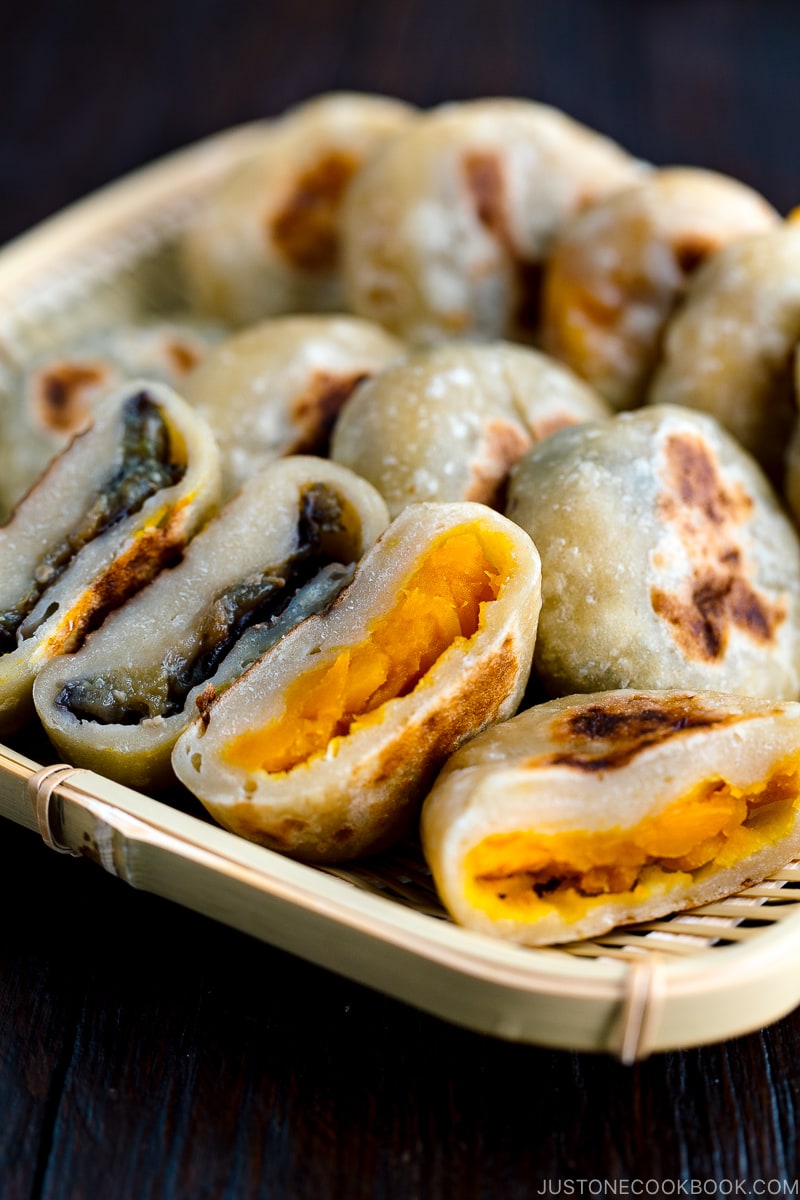
How Oyaki is Cooked
Oyaki were traditionally cooked and charred in the ash of an open fire in an Iro (囲炉裏) hearth. These days, oyaki at specialty stores are typically roasted on an iron pan, then either steamed or broiled before enjoying piping hot.
To cook oyaki at home, you can try one of these methods:
- Steamed
- Pan-fried then steamed
- Steamed and then pan-fried
- Deep-fried
Personally, I like to pan-fry oyaki first to give them a nice char, and then steam till they are cooked. But I encourage you to try a few methods to find your favorite way of preparing Japanese stuffed dumplings.
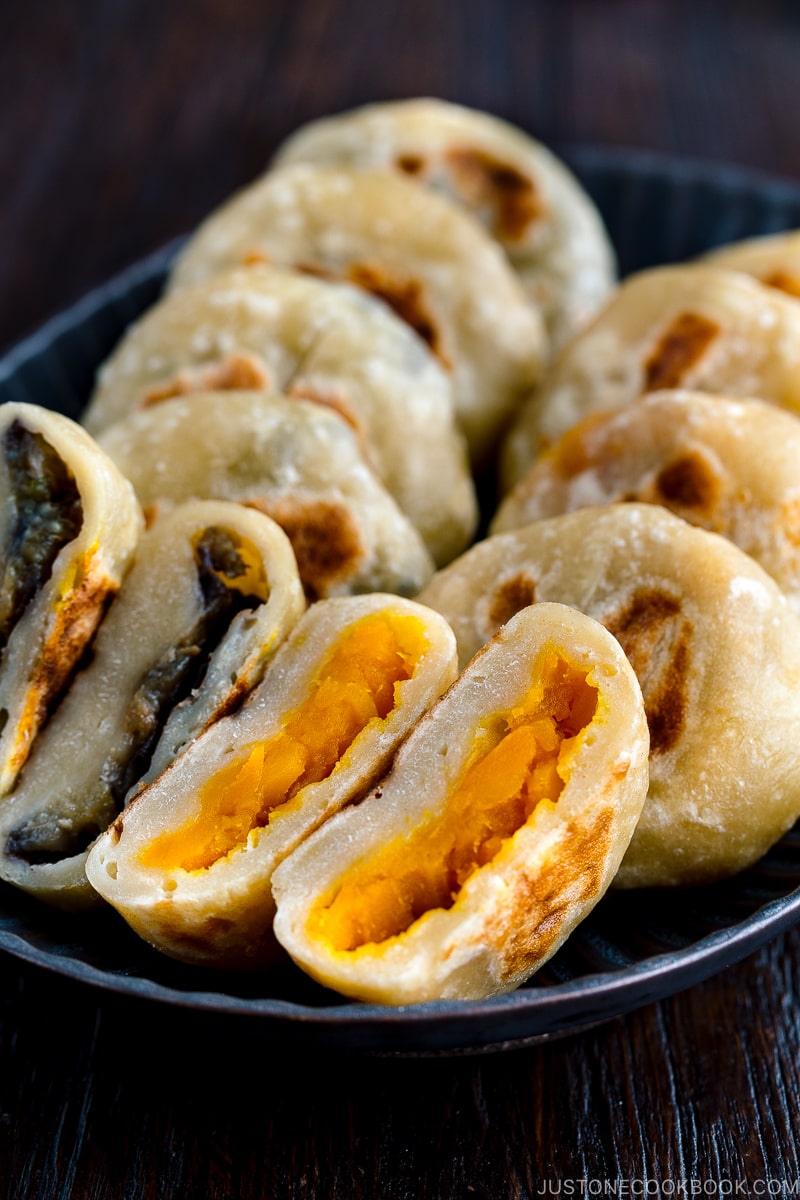
Popular Fillings for Oyaki
The type of fillings (or An 餡 in Japanese) for oyaki vary with region, with each area having its own local specialty. Today’s Oyaki recipe includes sweet and savory kabocha squash and miso-glazed eggplant fillings. They are very popular fillings for Japanese dumplings.
But there are endless choices of ingredients to stuff oyaki with. Here’s a list to give you some ideas to play with:
- Nozawana (a pickled leafy green famous in Nagano)
- Various mushrooms
- Kiriboshi Daikon (recipe coming soon!)
- Unborn (leeks and miso)
- Walnut miso
- Hijiki seaweed dressed with walnut
- Sweet azuki read beans (anko)
- Sesame miso
- Potatoes
- Fukinoto (butterbur sprout)
- Fukinoto miso
- Warabi (bracken)
- Japanese sweet potatoes
- Gobo (burdock root)
- Kinpira Gobo
- Local Shinshu salmon
- Jidori chicken
- Apple
These ingredients are often seasoned with soy sauce or miso for savory dumplings and sweetened with sugar for sweet dumplings. The dough doesn’t have much taste, so make sure to add extra flavor to the fillings so the oyaki won’t taste bland.
There are so many creative fillings and seasonings to try. Have fun experimenting with new flavors!
How to Serve Oyaki
Oyaki is a great snack or side dish for a meal. Serve oyaki with a cold beer in the summer and hot tea in the winter. And when you have a chance to visit Nagano Prefecture, don’t forget to try these healthy and delicious snacks in specialty shops and food stalls!
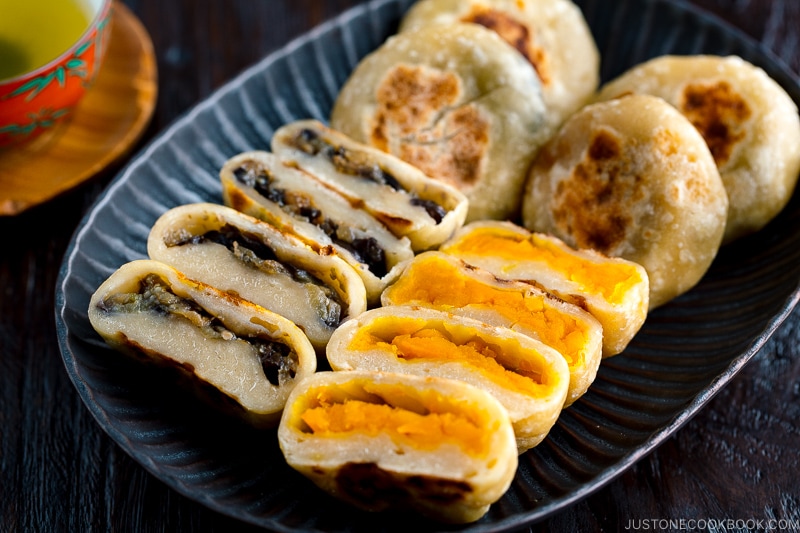
Wish to learn more about Japanese cooking? Sign up for our free newsletter to receive cooking tips & recipe updates! And stay in touch with me on Facebook, Pinterest, YouTubeand Instagram.
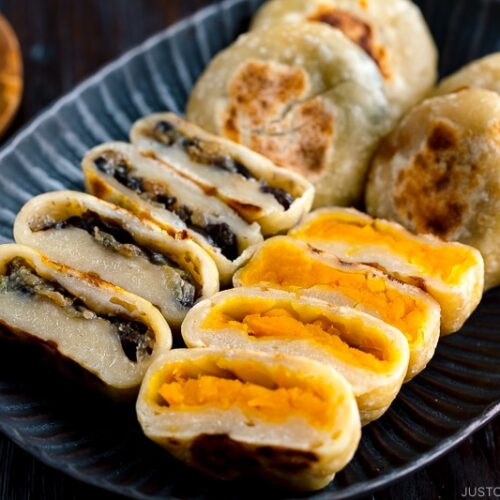
Oyaki (Japanese Stuffed Dumplings)
Stuffed with sweet kabocha squash and miso-glazed eggplant, these Oyaki Japanese dumplings are a popular snack in Nagano Prefecture in central Japan.
Ingredients
Prevent your screen from going dark
Instructions
To Make Dough
-
Using a fine-mesh strainer, sift 2½ cups all-purpose flour (plain flour) into a large bowl. Combine 200 ml boiling water (1 cup minus 2½ Tbsp), 1 tsp neutral oiland ¼ tsp Diamond Crystal kosher salt.
-
Mix the dry ingredients and wet ingredients with chopsticks until you can pick up the dough with your hands.
-
Use the dough to pick up the crumbs in the bowl.
-
Knead on a lightly floured surface for about 3 minutes, until a smooth dough forms. In Japan, we say “knead until the texture is like your earlobe.”
-
Form the dough into a ball, put it back in the bowl, cover with plastic wrap, and let it rest at room temperature for at least 30 minutes or longer. Letting the dough rest increases its elasticity making it easier to work with later, so please don‘t skip.
To Make the Eggplant Filling
-
While the dough rests, make the fillings. Remove the stems of 2 Japanese or Chinese eggplants and cut it half lengthwise. Then, slice into half circles. Soak in water for 5–10 minutes. (Meanwhile, you can cut the kabocha). Drain well and set aside.
-
Heat 1 Tbsp toasted sesame oil in a large frying pan and sauté the eggplant until it is coated with oil. Cover the lid and cook on low heat for 5 minutes.
-
When tender, add 1 Tbsp sugar and combine well.
-
Add 1 Tbsp miso. Add 2 shiso leaves (knob/ooba) that you‘ve julienned into thin strips. Mix well together. Transfer to a dish to let cool.
To Make the Kabocha Filling
To Cook the Oyaki
-
Set up a steamer by placing a steamer basket on top of a wok/pot filled with enough boiling water. Tip: If you don’t have a steamer, after cooking the oyaki in a frying pan, add ¼ cup water to the pan. Cover with a lid and steam it until the water evaporates.
-
Heat 1 Tbsp neutral oil in a frying pan (12 inch) and cook the oyaki, pinched-side down.
-
Pan-fry for 3–4 minutes each side, or until golden brown.
-
Transfer the oyaki to a steamer basket and cover to cook on high heat for 15–20 minutes (depending on the size of the oyaki and filling—a small one should take about 10 minutes). Make sure the lid is covered with a kitchen towel so the condensation on the lid doesn’t fall onto the oyaki.
-
When they are done steaming, transfer to a wire rack (I use a bamboo strainer) where the heat can escape from the bottom.
To Serve and Store
-
Enjoy the Oyaki immediately. As soon as they become warm, not hot, cover the leftovers with plastic wrap (I wrap individually). Don’t wait until completely cooled down. You can freeze to store for up to a month, and re-steam to enjoy later.
Nutrition
Nutrition Facts
Oyaki (Japanese Stuffed Dumplings)
Amount per Serving
% Daily Value*
* Percent Daily Values are based on a 2000 calorie diet.
©JustOneCookbook.com Content and photographs are copyright protected. Sharing of this recipe is both encouraged and appreciated. Copying and/or pasting full recipes to any website or social media is strictly prohibited. Please view my photo use policy here.

